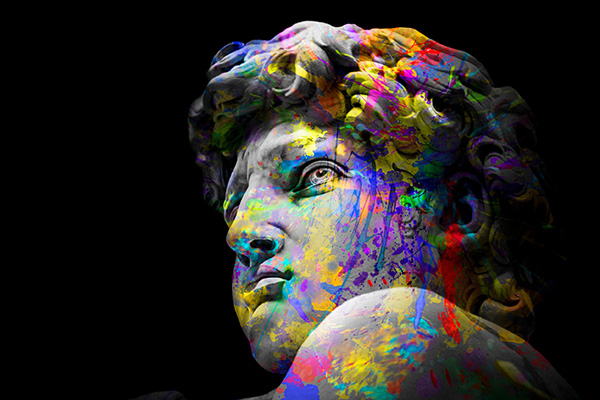religion
Understanding Psychic Predictions
 There are many misconceptions about psychic predictions. The first misconception is that a psychic prediction is static and unchanging. The second big myth is that psychics are omniscient deities who always see everything exactly as it will happen.
There are many misconceptions about psychic predictions. The first misconception is that a psychic prediction is static and unchanging. The second big myth is that psychics are omniscient deities who always see everything exactly as it will happen.
Even if we were able to predict every possible outcome for the rest of your life, many of those predictions will become inaccurate or even a complete failure over time because the future is flexible and fluid.
The future that a psychic foresees in a reading today will look slightly different in a month’s time, and will inevitably look significantly different in a year’s time. This is what distinguishes true psychic reading from fortune-telling.
Our destiny is constantly being shaped and adjusted by the creative capacity that exists within each of us. Each human being is the physical expression of a spirit essence with free will that allows us to create and navigate our reality, and direct our destiny. Our spirit, soul or consciousness shapes our daily reality and determines the course of our life journey. This process of creation is called manifestation.
Manifestation refers to the metaphysical idea that our thoughts, beliefs, and intentions produce tangible results in the external world. Manifestation is, in fact, the foundation of our very existence, for our present life journey as a spirit essence in human form is, in fact, also a manifestation!
Invoking Archangel Michael In Your Spiritual Practice
 Archangel Michael, the divine warrior and champion of truth and justice, is a powerful figure in many spiritual traditions. He is a prominent figure in Judaism, Christianity, Islam, the Baha’i Faith, and Neo-Paganism.
Archangel Michael, the divine warrior and champion of truth and justice, is a powerful figure in many spiritual traditions. He is a prominent figure in Judaism, Christianity, Islam, the Baha’i Faith, and Neo-Paganism.
His name in Hebrew means “Who is like the Lord?” and his title “Archangel” means “Prince of Angels.” Michael is the leader of the angelic realm and is known for his strength, courage, and protection. He fights for good, empowers the faithful, and accompanies the souls of the righteous to heaven.
He is typically depicted as a warrior, complete with sword and shield. He is also often shown defeating a dragon or other monstrous creature. In Christianity, he is specifically mentioned in the Book of Revelation as battling Satan.
In some depictions, he is shown holding scales. This is a reference to his position as guardian of the dead as their souls leave the earth. Just as the Roman god Mercury accompanied souls to the underworld, Michael is said to accompany the recently deceased on their journey to the other side.
Michael is a venerable spiritual figure and is often invoked in prayer, meditation, and other spiritual practices. Believers invoke his presence for protection, guidance, and spiritual strength.
The True Meaning Of Holiday Gifts
 While wrapping Christmas gifts for family and friends today, I thought about whether it is better to be on the giving or receiving end of presents during the holiday season?
While wrapping Christmas gifts for family and friends today, I thought about whether it is better to be on the giving or receiving end of presents during the holiday season?
In my childhood, receiving presents was undoubtedly the best! But my parents also taught me the importance of giving. They gave my sister and me a small allowance during the holidays to buy gifts for others. It was fun to shop for small items to give to our loved ones. With much anticipation, wetried to pick things that people would actually like and appreciate.
I therefore learned early on that while receiving gifts can be exciting and fun, giving them can be even more rewarding.
My parents were certainly on to something, because the value of giving has been scientifically proven to be more than just a sweet sentiment. For example, according to a study by the American Psychological Association, giving to others increases life expectancy by at least five years! Another study found that people who give to others experience lower blood pressure, less depression, and lower stress levels. In addition, giving to others can increase happiness and well-being. A Harvard Business School study found that giving money to someone else increased participants’ happiness more than spending it on themselves.
The Four Dimensions Of Holistic Self-Care
 In today’s fast-paced world, we get caught up in the hustle and bustle of everyday life, leaving little time for self-care. Yet, holistic self-care is essential for a healthy, happy, and fulfilling life.
In today’s fast-paced world, we get caught up in the hustle and bustle of everyday life, leaving little time for self-care. Yet, holistic self-care is essential for a healthy, happy, and fulfilling life.
There are also various myths about self-care. For example, self-care is not a one-size-fits-all approach. It is also sometimes misunderstood to simply mean ‘spa days’ or ‘bubble baths with candles.’
True self-care is multidimensional and includes various activities and practices that promote physical, emotional, mental, and spiritual health and well-being. Self-care is the ultimate expression of self-love.
It is important to adopt self-care practices that work for you and that suit your lifestyle. There is no right or wrong way to practice spiritual self-care.
The most important thing is to find activities that also help you to connect with your inner being and that nourishes your spirit, because for many people today, spirituality is often the most important missing piece of their self-care puzzle.
When spirituality is incorporated into our daily self-care routine it has a profound impact on our overall health and well-being. Spiritual self-care helps us to develop a deeper understanding of ourselves and our place in the world, and empowers us with the resilience to better cope with stress and adversity. In order to live a fulfilling and balanced life, it’s essential to embrace self-care in all its dimensions, including our spiritual health.
The Forgotten Art Of Self-Healing
 Self-healing is a holistic approach to wellness that too often takes a back seat in our modern existence.
Self-healing is a holistic approach to wellness that too often takes a back seat in our modern existence.
The mind-body has an incredible restorative and self-healing capacity that is often overlooked. Harnessing these inner forces can lead to a profound transformation of one’s life.
Self-healing is not just about recovering from physical ailments; it encompasses mental, emotional, and spiritual well-being.
It is the process of harnessing our body’s innate ability to recover from physical ailments and mental health challenges without relying solely on external intervention.
It’s about nurturing your body’s natural ability to rejuvenate, repair and thrive.
To achieve self-healing, it’s critical to recognize the mind-body connection. Our thoughts and emotions have a profound effect on our physical well-being. Negative thoughts and feelings such as stress, worry, anxiety, fear and resentment can all manifest as physical symptoms. Self-healing addresses these underlying emotional and mental issues to begin the healing process.
Embracing Art As A Spiritual Resource
 Art, in its many forms, continues to be a wonderful source of inspiration for my personal and spiritual growth journey. Art has the power to evoke emotion and connect us to feelings and something beyond the immediate boundaries of our lives.
Art, in its many forms, continues to be a wonderful source of inspiration for my personal and spiritual growth journey. Art has the power to evoke emotion and connect us to feelings and something beyond the immediate boundaries of our lives.
Whether it is a source of divine inspiration or an expression of spiritual wisdom, art has the potential to infuse our lives with beauty and eternal wisdom. Art is a profound spiritual resource.
The deep connection between Renaissance art and spirituality has not only shaped my own artistic and spiritual journey, but has resonated deeply with countless others throughout history.
The Renaissance, which spanned the 14th through the 17th centuries, was a time marked by a thirst for knowledge and exploration. Artists, scholars, and scientists sought to understand and communicate the mysteries of the world and our place in it. As a result, art emerged as a powerful vehicle for expressing and exploring spiritual themes.
Renaissance artists, often working under the patronage of religious institutions, were masters and storytellers of symbolism. Their works, rich with hidden meanings, served as visual representations of faith and devotion. Their artistic masterpieces, including paintings, tapestries, and sculptures, became integral to devotional practices during this period.
